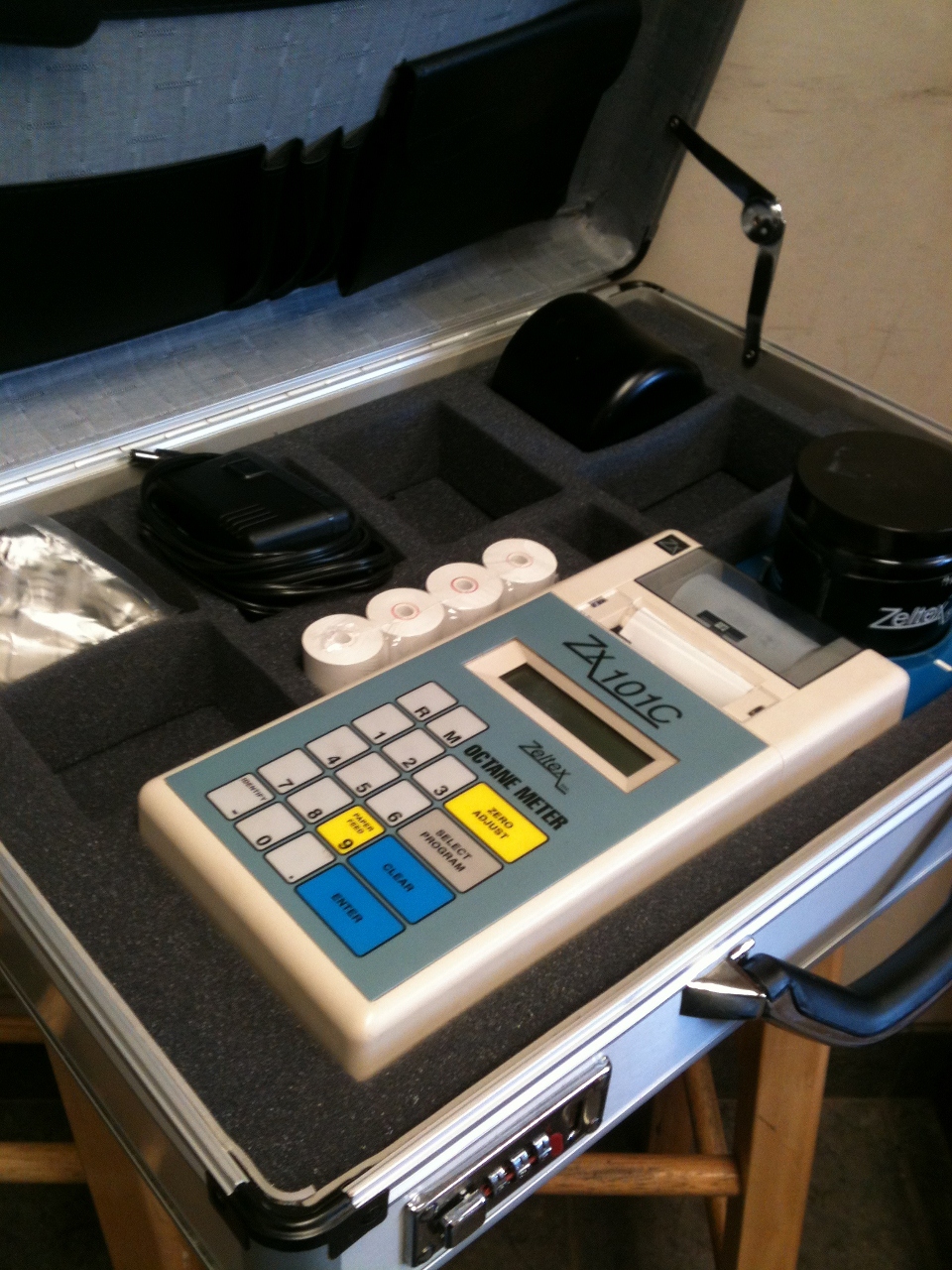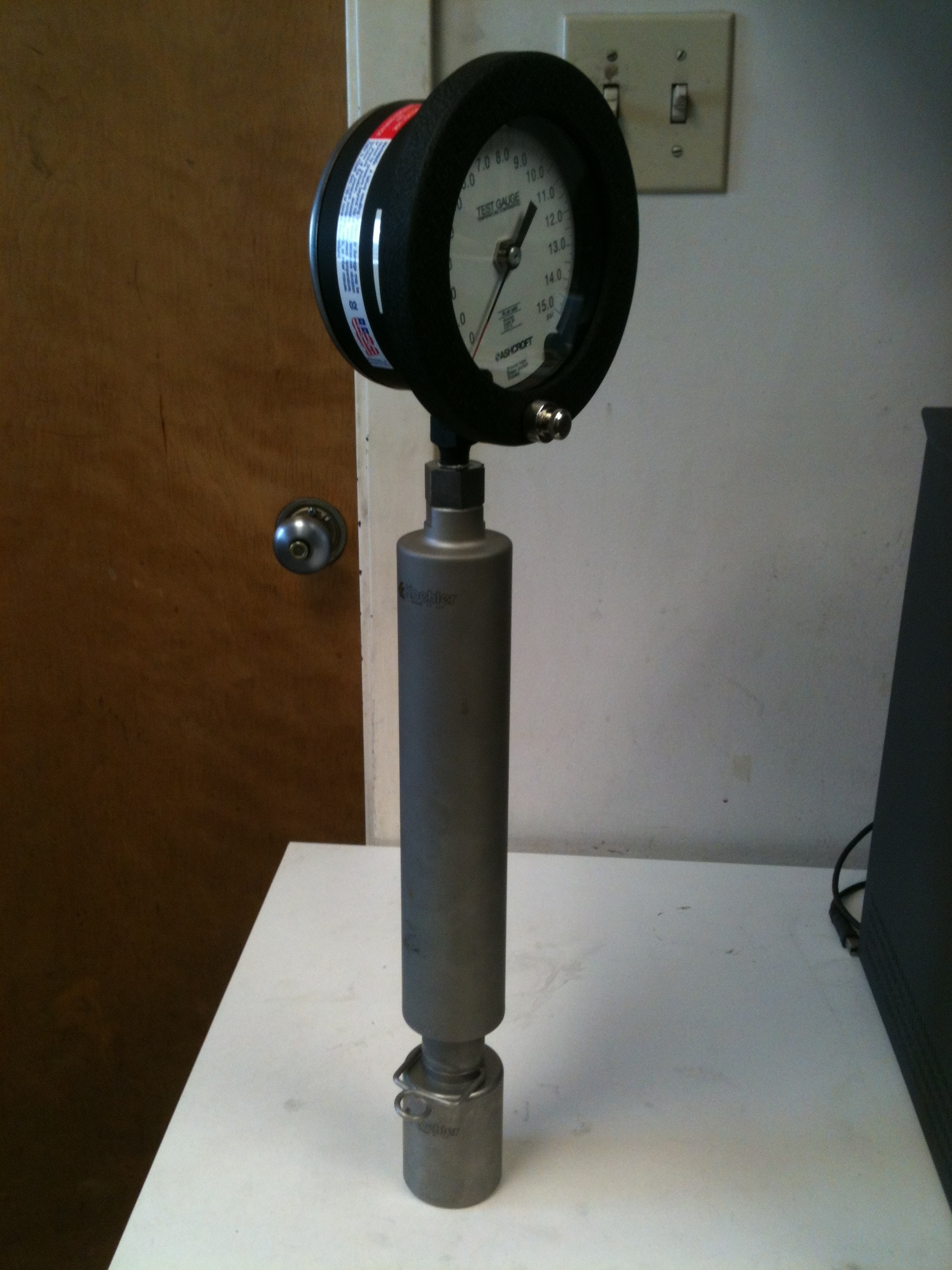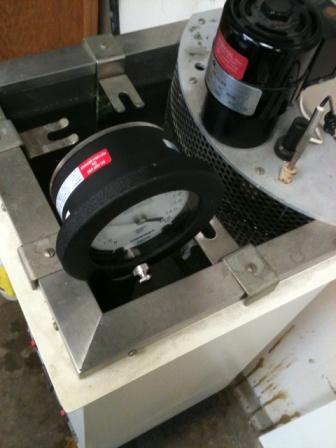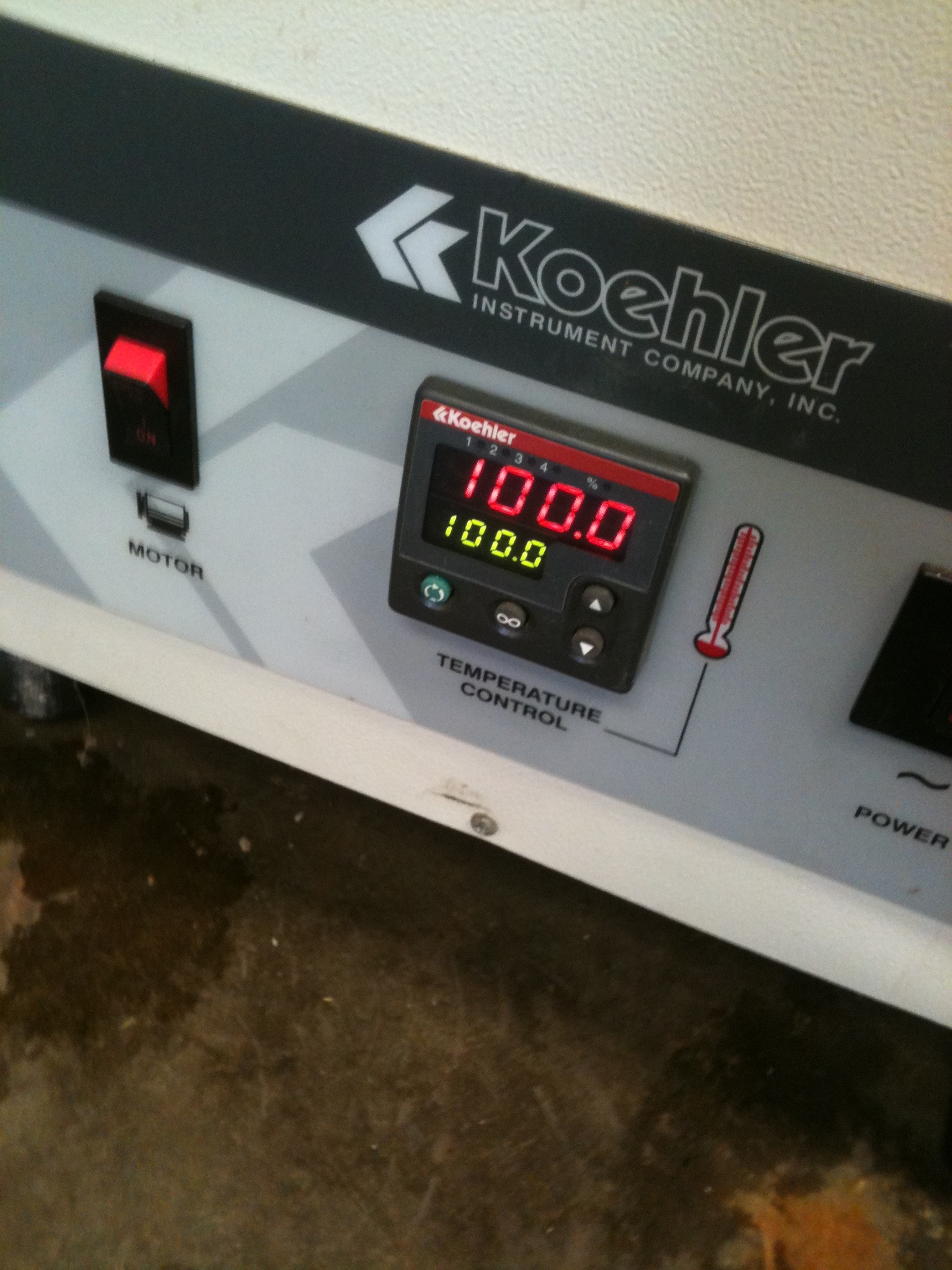March 2013
Saturday, March 09, 2013
DynoTech : Octane Testing
Here's a Zeltex 101C octane test meter that I acquired on Racejunk.com for much less than the current new price of $11,000. It had been used for a few years by a dirt track owner for testing gas in some class of racers who were limited to using pump gas. He recently sold his race track in the Albany NY area, and had no more use for this equipment. But we surely can make good use of this for tuning trail machines on the dyno. And once again, who but me would be interested in buying a used octane tester? We often encounter what we think is substandard gas, and now we can be sure. The Zeltex octane tester uses near-infrared spectroscopy to measure both motor and research octane and prints out both along with R+M/2 and ethanol %. These Zeltex testers are used by most states' Bureaus of Weights and Measures to test octane at gas stations. This one is calibrated to test unleaded gas with or without ethanol, and if I can obtain lab certified samples of commonly used race gas, it can be calibrated to do those, too.
This will be especially useful for companies that demonstrate pump gas safe engine modifications and tuning at this facility. Is the 93 octane gas really 93 or is it 102 or 86? This will take the guesswork out!

Thursday, March 07, 2013
DynoTech : Reid Vapor Pressure Testing
Reid Vapor Pressure TESTING!
For race engine tuning, our biggest problem is stale race gas that racers buy unwittingly. Stale race gas can have excellent octane, but volatility can be poor due to the absence of important “light ends” of the fuel. Light ends are the first to escape into the atmosphere—creating that satisfying “whoosh” when sealed drums of race gas are first opened. But after gas is drawn and drum resealed, more light ends will escape into the air pocket above the fuel in the resealed drum. Then when the drum is opened again to draw more fuel, there is another, but less satisfying “whoosh” and more light ends escape into the atmosphere. By the time that large drum is consumed a few gallons at a time, no more “whoosh” is heard. Then the fuel is, for our purposes, “dead”. With the light ends that help initiate vaporization gone—escaped into the atmosphere—the fuel then needs excessive amounts of heat to get it to vaporize. Its volatility is now poor, and trouble is lurking for those who don’t understand what’s happening. I like to compare race gas’ “light ends” to the CO2 carbonation in 2 liter bottles of Coke. When first opened, the Coke is fizzy and good. But every time the plastic bottle is resealed then reopened later, more CO2 escapes into the atmosphere. And each time that happens, the fizz is diminished. After being opened and resealed a dozen times, that last swig of Coke you take from the bottom of the large bottle is awful—flat and fizzless, just like stale race gas.
What about those "sealed" 5 gallon “pails” of race gas? Are they filled and sealed at the refinery, or are they transfilled from open drums at a wholesaler’s facility and then “sealed”?? How long has that drum remained open? It pays to be leery!
Carl McQuillen Racing Engines in LeRoy, NY continues to manufacture and sell nitrogen pressurizing systems for drummed race gas. Those are a great tool for dispensing and storing race gas in 30-50 gallon drums, very much like draft beer systems do with CO2.
Poor volatility from escaped “light ends” can result in fuel failing to vaporize as it travels from the carbs/ throttle bodies into the intake ports/ crankcases (two-stroke)/ combustion chambers. We accurately measure our engines’ fuel flow as it travels from the fuel pumps into the engines, and we expect to see close to .60 lb/ hr of fuel for every HP the engine is generating. When practical, we measure airflow into the engines’ airboxes and .60 lb/hphr is typically 12/1 A/F ratio (12 pounds of air per pound of fuel). As a secondary source if information, we use an Innovate wide band A/F ratio meter that measures the exhaust gases coming out the pipes and gives us a chemical A/F reading that often is identical to the mechanical readings. As we approach maximum HP at 13/1 A/F, if octane is insufficient, we sometimes hear loud “clicks” of detonation on our copper tube sensor, and can abort testing before damage occurs. But stale gas measures pound for pound exactly like fresh gas, and what if only ¾ of the fuel is vaporizing in the combustion chamber? That means our indicated .60 lb/hphr is actually, net in the combustion chamber, .45 lb/hphr and that dandy 12/1 indicated A/F is, net, 16/1. In that situation, there might be zero clicks of deto, just wickedly net lean mixtures that cause pistons to grow quickly and stick in the cylinder bores! Our dyno flowmeters are indicating that all is perfect, but what it doesn’t tell us is the % of fuel vaporizing and burning in the combustion chamber vs. the % that finally manages to vaporize and burn in the hot pipes. If the gas is stale, all of our dyno meters can be telling us all is well, zero clicks of deto means octane is sufficient, and piston(s) can stick and spoil our tuning session. There’s nothing worse than a guy with a “stuck” engine having to have to pay for dyno time, take it home to fix it, then come back to retune with fresh gas and pay again.
My most recent obvious stale gas experience was my pal Gene Hurin (who’s been tuning here with his jet-changing wife Cathy for 25 years) coming here with a new HTG Polaris 1000 improver. He had bought 5 gallons of VP C16 gas from a local vendor, and Gene knew it came from an unsealed 55 gallon drum in the corner of the warehouse. Gene and I talked about the issues of stale gas before we began tweaking the Lectron carbs, but when we got down to ¾ turn on the power jets the engine seized with no warning at .60 BSFC and160 lb/hr of fuel flowing into the engine with 100 degree F coolant! Cringe. So Gene went home, fixed the engine, then came back again with Sunoco Maximal he bought from the infamous “Fat Nancy’s” in Pulaski NY who sells a zillion gallons of Sunoco race gas, and fresh is what Gene bought. This time with Gene’s orifice puckered severely, we leaned it down to 160 lb/hr, then continued leaning down all the way to 140 lb/hr and the engine was happy and powerful! It was much more pleasant charging Gene for the second tuning session.
How can we prevent future issues like this?
Kevin Cameron suggested that the important “light ends” of the fuel contribute substantially to Reid Vapor Pressure. Every name brand race gas has an RVP rating. That being the case, why not test dyno customers’ race gas for RVP before we wreck parts? What is RVP? How is an RVP test performed?
Thank you KC and Google! RVP is determined by precisely heating a quantity of gasoline to 100.0 degrees F + or - .2 degrees F. Then after agitating the 100.0F fuel, the pressure in a closed air chamber above the gasoline (4x the volume of the gasoline) is measured with an accurate bourdon tube test gauge and that is the exact RVP. The higher the RVP, the easier it is to vaporize, especially in cold winter air. Winter blended pump gas RVP is close to 15psi. Amond the lowest RVP even when fresh is C16 with less than 2psi! Trying to start a C16-fueled engine in February is impossible! Sunoco Maximal which has octane similar to C16 has 6psi RVP--a much better high octane fuel for cool engine performance in winter air.
If you watch dragracers "clean out" their engines on jackstands prior to the start of a race, you often hear them gurgle and pop for the first few quick blasts from clutch engagement to peak RPM. That gurgling you hear is lean misfire from cold low RVP gas going through cold carbs and into cold combustion chambers. Once the combustion chambers are heated, more of the lava-lamp-like globs of fuel will finally vaporize, and the engine will run cleanly. The higher the fuel's RVP, the better!
So let's just measure our fuel's RVP. Sounds simple enough, but when I found that the equipment needed to do this cost $7000—a $6000 precision water heater and a $1000 vessel for containing and measuring the fuel head pressure, I went to Ebay. There, I found an engine manufacturer’s surplus Koehler water bath used to precisely heat the fuel samples to 100.0F. Who in the world, but me, would want to buy a used RVP test bath? So it had languished on Ebay with zero bids since August, and I came along and “bought it now” for 20% of new cost. But it came with no fuel testing vessel—called a RVP “bomb” made of stainless steel, hydro-tested to 1000psi and a lab certified pressure gauge. I had to bite the bullet and buy a new fuel test “bomb” (yes, that’s what they call them!) from Koehler for $700, and a new $400 15psi .25% accuracy pressure gauge was Ebayed for $30. So now we can test for stale gas—hopefully before we wreck parts!
I hated high school chemistry. The only enjoyment I got from those awful lab sessions was making hydrogen bombs from dissociating hydrogen and oxygen from water then igniting those with a match.. Acetylene bombs were also great fun, especially when several of my equally deviant pals and I pooled our precisely rationed grams of calcium carbide to mix with water! But here I am, trying to figure out the Reid Vapor (Vapour) Pressure of racing gasoline! My annoyed chemistry teacher would be proud, if he were still alive.
An RVP test takes about an hour—about as much time as it takes to set up a sled or bare engine onto the dyno. So from here on, RVP testing can be done prior to race gas dyno testing/ tuning, so the one final mysterious variable might be eliminated.

Koehler RVP “Bomb”. The gasoline to be tested is poured into the shorter lower portion of the stainless steel cylinder, which unscrews from the hollow upped air chamber. After the lower chamber is filled with gasoline to be tested, it is attached to the upper chamber.

Here’s the RVP bomb sitting in the Koehler circulating water bath at 100.0F. It holds about 20 gallons of 100.0F water agitated by a propeller driven by the motor on the upper right.

The yellow temperature numbers are thermostat setting, and the red temperature numbers are the exact temperature of the water circulating around the “bomb”. Precision is required!
Archives
May 2015
March 2015
January 2015
December 2014
November 2014
November 2013
October 2013
September 2013
April 2013
March 2013
February 2013
January 2013
October 2012
September 2012
July 2012
May 2012
February 2012
December 2011
November 2011
September 2011
August 2011
June 2011
February 2011
January 2011
December 2010
November 2010
October 2010
September 2010
July 2010
June 2010
May 2010
April 2010
March 2010
January 2010
November 2009
October 2009
August 2009
June 2009
May 2009
April 2009
March 2009
February 2009
December 2008
November 2008
October 2008
September 2008
August 2008
July 2008
June 2008
May 2008
April 2008
March 2008
February 2008
January 2008
December 2007
November 2007
October 2007
September 2007
August 2007
July 2007
June 2007
May 2007
April 2007
March 2007
February 2007
January 2007
December 2006
October 2006
September 2006
August 2006
July 2006
June 2006
May 2006
April 2006
March 2006
February 2006
January 2006
December 2005
November 2005
October 2005
September 2005
August 2005
July 2005
June 2005
May 2005
April 2005
February 2005
January 2005
December 2004
November 2004
October 2004
September 2002
Misc.
Search
Admin Login
